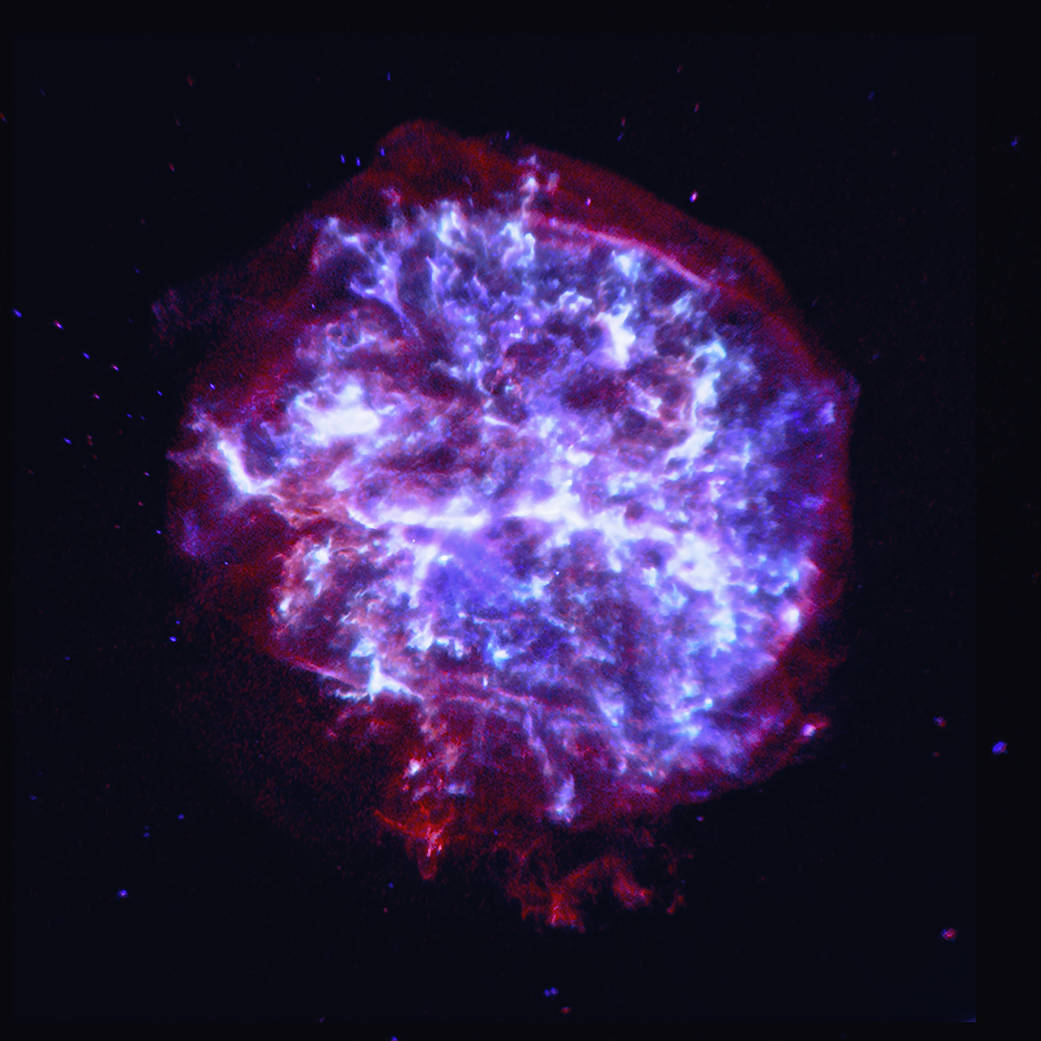2019 August 1
Elements in the Aftermath
Image Credit: NASA/CXC/SAO
Explanation: Massive stars spend their brief lives furiously burning nuclear fuel. Through fusion at extreme temperatures and densities surrounding the stellar core, nuclei of light elements ike Hydrogen and Helium are combined to heavier elements like Carbon, Oxygen, etc. in a progression which ends with Iron. So a supernova explosion, a massive star’s inevitable and spectacular demise, blasts back into space debris enriched in heavier elements to be incorporated into other stars and planets and people). This detailed false-color x-ray image from the orbiting Chandra Observatory shows such a hot, expanding stellar debris cloud about 36 light-years across. Cataloged as G292.0+1.8, this young supernova remnant is about 20,000 light-years distant toward the southern constellation Centaurus. Light from the inital supernova explosion reached Earth an estimated 1,600 years ago. Bluish colors highlight filaments of the mulitmillion degree gas which are exceptionally rich in Oxygen, Neon, and Magnesium. This enriching supernova also produced a pulsar in its aftermath, a rotating neutron star remnant of the collapsed stellar core. The stunning image was released as part of the 20th anniversary celebration of the Chandra X-ray Observatory.
超新星遗迹中的元素分布
影像来源: NASA/CXC/SAO
说明:大质量恒星在其短暂的生命中剧烈地燃烧着核燃料。通过在恒星核周围极端温度和密度下发生的核聚变,像氢和氦这种轻元素的原子核会被结合成如碳和氧等重元素,而这个过程以产生铁为结束。因此,超新星爆炸就是一颗大质量恒星不可避免的悲壮结局,在爆炸过程中,富含重元素的碎片会被抛入太空,成为其他恒星、行星和人类的一部分。这幅由绕轨道运行的钱德拉天文台拍摄的假色X射线影像呈现了直径约36光年且不断扩张的恒星碎片云。这个年轻的超新星遗迹编录号为G292.0+1.8,位于南天的半人马座方向、距离我们约2万光年远。来自最初超新星爆炸的光大约在1600年前就到达地球。在这幅影像中,明亮蓝色丝状结构的温度约有数百万度,其中含有极为丰富的氧、氖和镁。这颗富含物质的超新星在爆炸后还产生了脉冲星,那是一颗旋转的中子星,是恒星核坍塌后的残留物。这幅令人震惊的影像是作为钱德拉X射线天文台20周年庆典的一部分发布的。








2 Comments